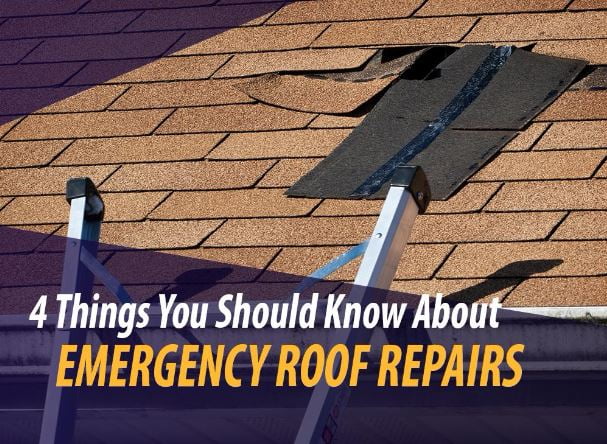Quick Guide: How to Prevent Roofing Emergencies
By Stacy MelleteThis section on prevention is perhaps the most important part of this entire series. You might think that the most important lesson to learn about roofing emergencies is how to deal with a sudden roof issue while it’s happening, but you’d be wrong. More often than not, roofing problems that result in a major roofing emergency tend to develop over time, so an ounce of prevention is worth a pound of cure.
Your best shot at limiting the chances of roofing emergencies is to make sure your roof is equipped for the worst. Two things are integral to that goal.

1 Routine Inspections
According to the National Roofing Contractors Association (NRCA), roof inspections should be conducted twice a year—once in spring and again during fall. During an inspection, your local roofing contractor will evaluate both the interior and exterior parts of your roof for:
• existing damage – leaks, missing or broken roof material, sagging decks, wood rot, mold and mildew spots, peeling paint on interior and exterior walls, etc.
• potential issues – granule loss, curling or buckling shingles, clogged gutters or downspouts, corroded flashing, standing water, etc.
Each part of your roofing system will be rated good, fair or poor. Anything that scores a “fair” must be more thoroughly inspected, while anything with a “poor” rating must be repaired or replaced as soon as possible.
2 Scheduled Maintenance
Nobody doubts the role maintenance plays in extending a roof’s lifespan, but too many property owners are still lax about it. In order to prevent roofing emergencies, you need both preventive and reactive maintenance. Preventive maintenance addresses potential issues, while reactive maintenance corrects existing damage before they get a chance to worsen.
Like inspection, roof maintenance should also be scheduled twice a year—once before the start of the most severe season and again after. Depending on where you live, the harshest season for roofs is either summer or winter, which is why it makes sense to have your inspections and roof repairs work done at the same time.
About Moisture Surveys
Besides inspections and general maintenance, periodic moisture surveys are also highly recommended. The purpose of these surveys is to measure the amount of moisture present in a roof and to document where the moisture is located. The goal is to help homeowners make an informed decision on where to focus their maintenance activities.
Moisture surveys can be done using three different types of equipment:
• Infrared scanner – determines the amount of heat lost or retained through the insulation (wet materials conduct heat better than dry materials)
• Nuclear isotopic meter – sends hydrogen ions into the roof and determines the number of ions that bounce back (the presence of water on the roof ups the hydrogen ion count)
• Electrical capacitance and resistance meter – measures the electrical conductivity of roof materials (wet materials conduct electricity better than dry materials)
But what should you do when you’re already at the point where immediate intervention from a roofing contractor is necessary? That’s what we’ll find out in the third and final installment of this three-part blog.